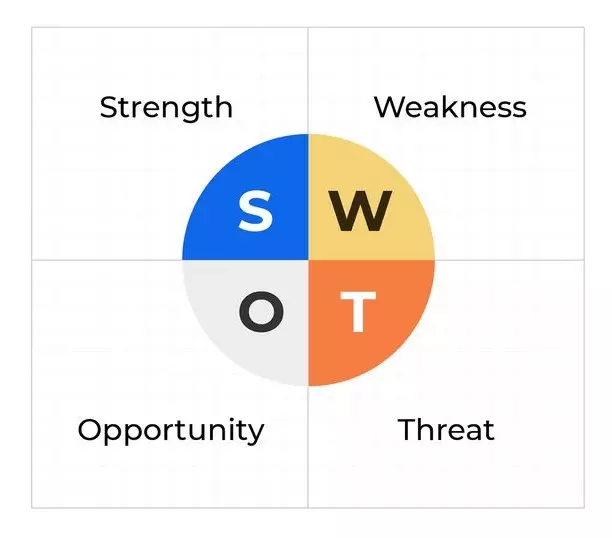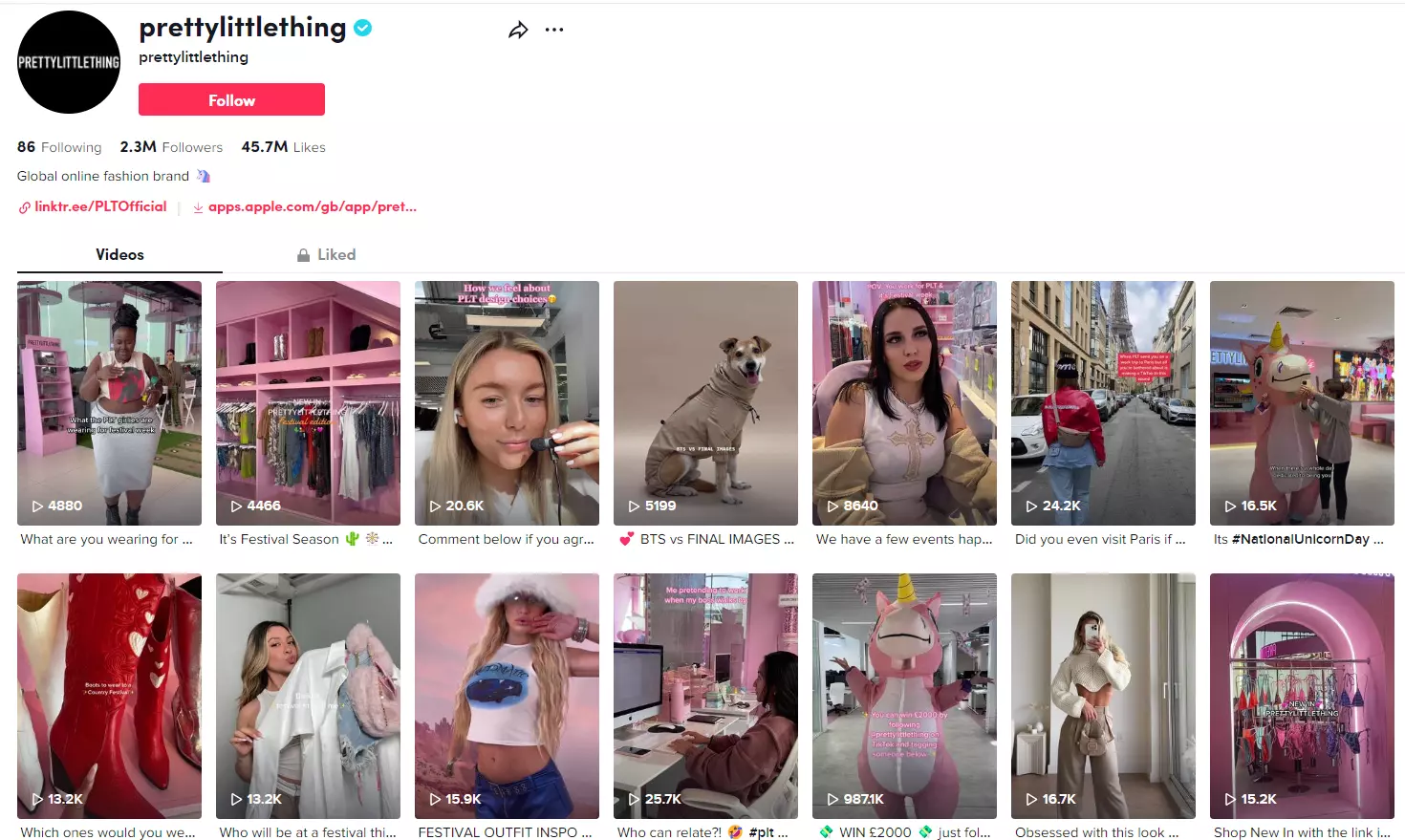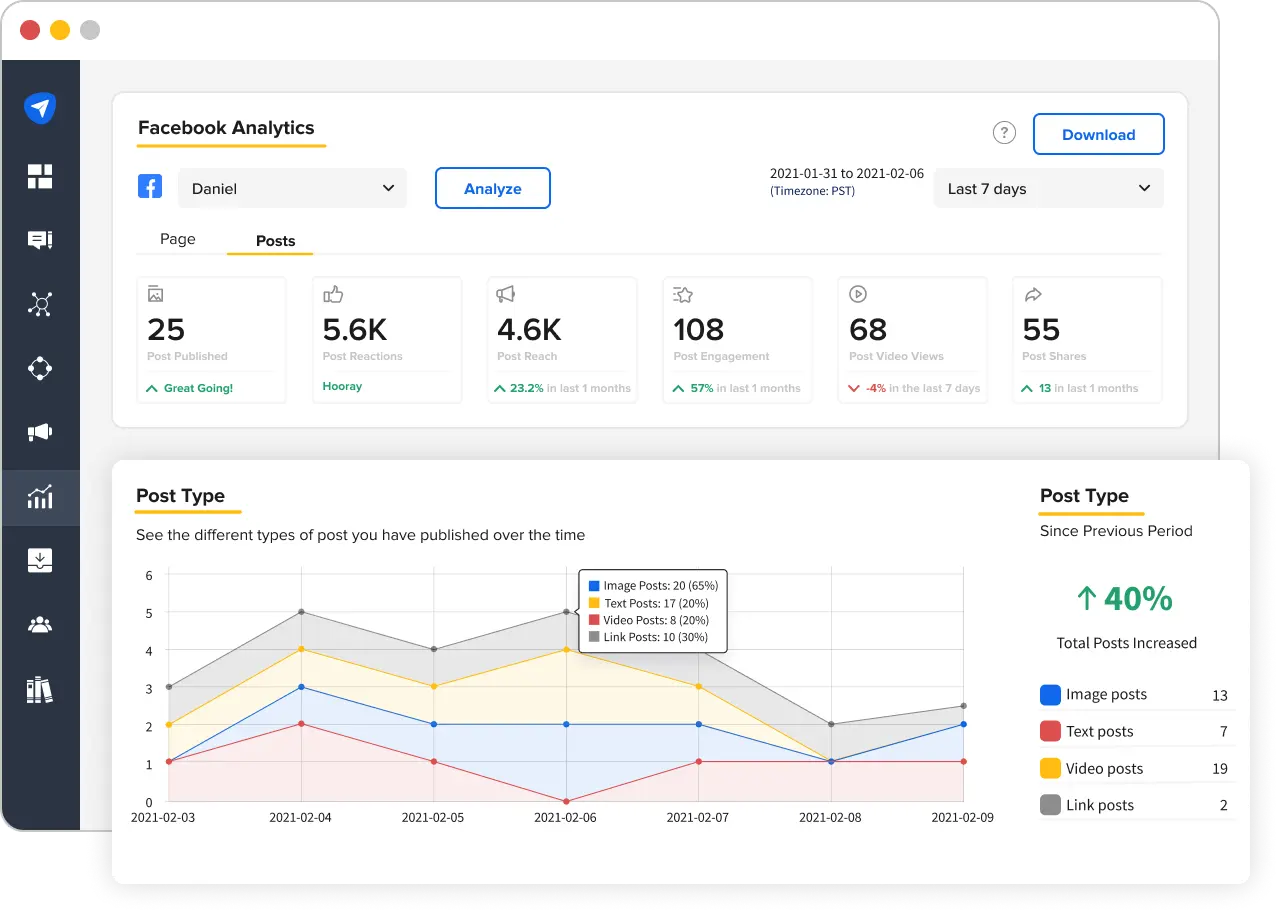[ad_1]
Do you need help to make sense of your brand’s social media performance?
Wondering how you can up your game and leave your competitors in the digital dust?
Wait! Before you set out to do anything, you must do some soul-searching and understand your company’s position in the social media landscape.
It’s essential to clearly understand your business’s strengths, weaknesses, opportunities, and threats to develop a strategy that maximizes your potential for success.
That’s where the social media SWOT analysis comes in.
By doing a social media SWOT analysis, you can identify your business’s position on social media based on different metrics such as engagement rates, reach, sentiment in customer feedback, branding consistency, and social media strategy, and develop a strategy that sets you apart from the competition.
In this blog post, we’ll provide expert tips and tricks on conducting a SWOT analysis to help you develop a well-informed and winning social media strategy.
Plus, we have created a customizable social media SWOT analysis template you can use to help you unlock your business’s potential.
What is a Social Media SWOT Analysis?
Social media SWOT analysis is a super handy framework that helps you analyze the current status of your social media marketing on various platfrom.
The term SWOT stands for Strength, Weakness, Opportunities, and Threats. By evaluating your social media presence based on these four elements, you will understand all the external and internal factors that impact your social media presence currently and could impact it in the future.

Let’s break down the acronym to understand the framework better:
Strengths: The things that you’re doing really well on social media. These are the superpowers that give your brand an edge. (For e.g., “We have a loyal and growing follower base.”)
Weaknesses: The different areas where your social media game might be falling short or could use improvement. Think of them as chinks in your digital armor. (For e.g.,“ We have a weak or unclear brand messaging.”)
Opportunities: The external factors that you can capitalize on to improve your social media presence. Consider them little goldmines waiting to be discovered to supercharge your strategy. (For e.g.,“ We can tap into new or emerging social media platforms like TikTok.”)
Threats: The external factors that could potentially harm your social media presence. These are the storms you need to navigate carefully to protect your brand’s online reputation. (For e.g., “One of our posts sparked an online controversy which could affect our brand reputation.”)
One thing you need to keep in mind is that the SWOT analysis will only be as effective as the data and insights it’s based on. Inaccurate, outdated, or incomplete data can lead to misguided conclusions and, ultimately, ineffective strategies.
Benefits of Doing a Social Media SWOT Analysis
Whatever you are thinking right now is right. Sure, it will take a good chunk of effort to gather all that data from different sources to conduct the analysis.
But trust us, it’s going to be worth it in the end! Let’s look at the benefits of conducting a social media SWOT analysis:
1. SMART Goal Making
It has always been said that the best way to decide on the objectives of your social media marketing—or any other marketing channel—is by using the SMART goal framework.
Specific, Measurable, Achievable, Relevant, and Time-bound (SMART) goals make all the difference. By performing a SWOT analysis, you get so much closer to defining the SMART goals. It helps you zero in on your current situation.
With a clear picture of your strengths, weaknesses, opportunities, and threats, you can set goals completely tailored to your brand, achievable, and relevant.
2. Better Resource Allocation
Know a marketing team that has said they have enough resources? We can all agree on this – marketing budgets aren’t always as generous as we’d like them to be.
In such cases, you must ensure you’re putting your time, energy, and budget where they’ll make the biggest impact.
With the help of the SWOT analysis, you get a crystal-clear view of what’s working, what needs improvement, and where there’s potential for growth. This way, you will be able to allocate your resources more effectively where they are most needed.
For example, imagine you run a small online clothing store with a limited marketing budget. A SWOT analysis reveals your Instagram account as a strength and collaboration with TikTok influencers as an opportunity, while your Facebook page underperforms.
With these insights, you can dedicate more resources to Instagram, creating engaging content and targeted ads. You can also allocate a small budget to experiment with TikTok collaborations.
Look at the brand PrettyLittleThing, a fashion retailer brand following a similar strategy and capitalizing on the opportunity to collaborate with relevant influencers on TikTok. Their feed is replete with videos from multiple influencers.

3. Deeper Analysis Process
Nobody can deny the importance of data analysis in creating successful social media strategies. The more data-driven your strategies are, the better they will perform.
And the SWOT analysis screams the benefit of data analysis.
The framework is all about crunching numbers like a pro while also tuning into the emotions and feelings of your audience. It’s like being a social media detective and a mind reader all at once.
The SWOT analysis thus demands a deep analysis of both qualitative and quantitative social media data. It opens up new layers of data analysis that will help you make better decisions.
4. Help You Create an Audience-Relevant Content Strategy
Creating a content strategy for “a wee person named Joe” is a hit-and-miss method. You need to be aware of your audience to create formidable social media content.
The SWOT analysis leads to a better understanding of your target audience and helps you identify what types of content are most likely to engage and resonate with them.
While the strengths and weaknesses quadrants make you aware of the aspects of your social media presence that resonate with your target market segment, opportunities and threats tell you about new audience segments and the challenges you may face in reaching them.
Glossier is one such brand that has widened its marketing segment from younger women to older women and customers outside of the United States. This expansion also informed their content marketing strategy to make more educational content about skincare and makeup techniques.

Where to Gather Data for Social Media SWOT Analysis?
When conducting a social media SWOT analysis, it’s essential to gather data from various sources to ensure a comprehensive and accurate assessment.
Here are some sources you can use to fetch data for your analysis:
1. Social Media Platform Analytics
The analytics section of every social media platform should be your first destination for data.
All of them offer built-in analytics tools that provide valuable insights into your account’s performance. You can easily get valuable data that will aid you in conducting a formidable SWOT analysis.
However, fetching data from different social media platforms can be burdensome when you are handling multiple accounts. In such cases, it’s best to use social media analytics tools that bring the analytics of every platform under one roof.
Conducting a social media SWOT analysis for multiple clients can be nerve-wracking. To ease your tracking and reporting process, you can rely on SocialPilot.
Our powerful social media reporting dashboard can help you track all engagement metrics. You can see the detailed analytics for every social media platform on one dashboard. Plus, you can export snazzy PDF reports to wow clients.

2. Google Analytics
Google Analytics can be a game-changer for your social media SWOT analysis. This web analytics tool provides deeper insights into social channel traffic and user behavior.
You can easily identify your strengths and weaknesses by zoning in on high-performing content, driving traffic and conversions, and low-performing channels and content with high bounce rates.
Google Analytics provides information like “Audience Insights” and “Acquisition Channels” that let you dig deep into your traffic demographics and where they are coming from. Keep a constant eye on the data; it will help you discover opportunities in untapped audience segments or platforms generating interest currently.
3. Social Listening Tools
Your SWOT analysis is not done without understanding what is the audience sentiment out there for your brand. Every day people are talking about you and your competitors. Listening to them will better inform all of your SWOT quadrants.
But how do you do that?
There are many social media listening tools that can help you monitor online conversations about your brand, industry, and competitors, providing insights into sentiment, trends, and potential threats or opportunities.
Using the insights, you can analyze negative feedback, emerging trends, competitor activity, and untapped audiences and pivot your social media marketing strategy accordingly.
4. Industry Reports and Research
The best way to seek opportunities and stay alert for any unprecedented threats to your social media presence is by staying abreast of the latest industry reports and research.
Being updated with the latest industry research, reports, and trends can help you spot emerging opportunities and threats, such as unique selling points, industry benchmarks, and competitor strategies that could impact your social media strategy.
5. Customer Feedback and Reviews
Are you tracking how your followers and customers perceive your brand on social media?
You need to understand your followers’ and customers’ views, experiences, and preferences through surveys, reviews, and comments on social media platforms. It will be a part of the sentimental data, which is pretty important in conducting your SWOT analysis.
This will help you better understand their needs, preferences, and pain points, allowing you to identify strengths and weaknesses in your strategy.
How to do a Social Media SWOT Analysis?
We believe by now you have realized the importance of a social media SWOT analysis.
Let’s now understand each quadrant of the framework deeply so you can conduct a formidable SWOT analysis of your social media presence.
To help you along the way, we have created a customizable social media SWOT analysis template that you can use to jot down your data and strategies.
Step 1: Start by Understanding Your Strengths
It’s good to begin your journey on a positive note, right? We are often told to learn from our mistakes, but we also need to learn from our successes.
So, first of all, figure out what you are doing right. Dive into your social media analytics to understand what makes your social media game strong.
You can identify some of the following things:
- Which platform works best for you? Does Instagram have a fair share of your loyal follower base that loves interacting with your brand, or is it Facebook?
- Which type of content is working best for you? Does the audience like your unique Instagram style or the uber-cool Reels you make?
- Do you have a strong circle of influencers supporting your brand?
- Which of your campaign goal has been reached constantly?
The idea behind figuring out your strengths is to identify what has been working for you and double down on it. Knowing your strengths will enable you to allocate resources as well.
Remember, it’s always important to capitalize on your strengths so they don’t become your weakness but continue to open up new opportunities for you.
Step 2: Learn from Your Weaknesses
Next, you need to identify your weaknesses. If you aren’t getting to where you want to be, it’s time to take off the subjective glasses and analyze your mistakes based on both qualitative and quantitative metrics.
Here are some of the questions that you might need to address to start with:
- Which social media platform is proving a tough nut to crack for reach, engagement, or conversion?
- Are you sharing limited content variety or formats on your brand profiles?
- Are you struggling to stay on top of the latest platform features?
- Are you inconsistent with your posting?
Instead of seeing your shortcoming as weaknesses, see them as areas for improvement. It will enable you to create more informed decisions on where to focus your efforts and resources.
Step 3: Look for Opportunities
Next, we look for opportunities. This is the step where you must try to figure out the areas that have remained untapped in your social strategies and capitalize on them.
And opportunities can come in many forms, such as new platforms, changing trends, untapped markets, or even untapped metrics. Also, understanding user sentiments to discover what your audience is asking can open doors for many opportunities.
To get you started on pinpointing your opportunities, here are some things to consider:
- Are there any new social media platforms or features that you can use to reach your audience?
- Are there any partnerships or collaborations you can pursue on social media?
- Are there any social media metrics showing growth that you can leverage to improve your ROI?
Basically, in this quadrant, you are planning ahead. With this step, you will have a better idea of what new tasks you need to take up to grow your social media marketing.
Step 4: Beware of Threats
It’s time to take a look at the internal and external factors that can be a threat to your social media growth.
Your aim here is to identify potential roadblocks and prepare a plan to pivot your strategy in a safer direction.
So what counts as threats? There are multiple things to look out for, such as competition, changing algorithms, negative online sentiment, etc. Start by asking yourself the following questions:
- Has your competitor launched a viral campaign that may steal your thunder?
- Do the new social media algorithm changes go against your current social media strategy?
- Is there any possible faux pas on social media that can give you negative media coverage and damage your public perception?
Make sure you keep an eye on the latest trends, competitor moments, changing algorithms, and broader cultural movements always.
Are You Ready to Analyze?
No doubt that the SWOT analysis of your social media presence is challenging. But it is worth it.
Picture this: by putting in the work now, you’ll be unlocking a treasure trove of insights that’ll help you strengthen your social media presence for the future.
So take the dive to check your strengths, weaknesses, opportunities, and possible threats to create a formidable social media strategy.
Don’t forget to use our social media SWOT analysis template to get started without any hassles!
[ad_2]
Source link









